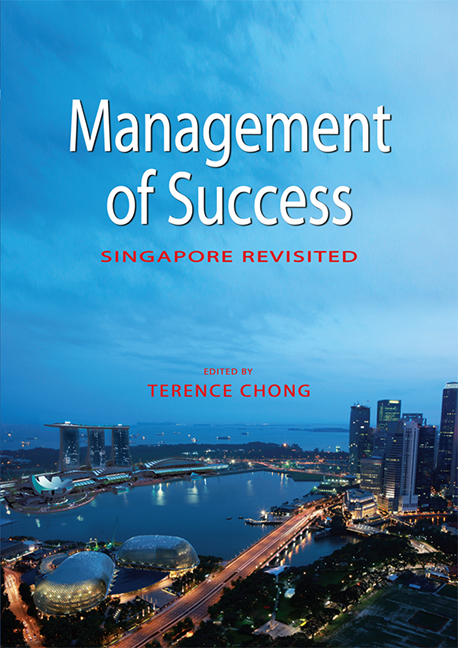Book contents
- Frontmatter
- Contents
- List of Tables and Figures
- Foreword
- Message
- Quote
- Preface
- The Contributors
- 1 Introduction: The Role of Success in Singapore's National Identity
- SECTION 1 SINGAPORE IN THE BIGGER PICTURE
- SECTION 2 LEADERSHIP, POLICY AND POLITICS
- SECTION 3 THE RESTRUCTURING OF THE ECONOMY
- 8 Singapore's Changing Economic Model
- 9 Globalizing State, Disappearing Nation: The Impact of Foreign Participation in the Singapore Economy
- 10 Exploring New Engines for Growth
- SECTION 4 THE TRANSFORMATION OF SOCIETY
- SECTION 5 THE LAW
- SECTION 6 MODIFICATION OF THE ENVIRONMENT
- SECTION 7 COMMUNITY AND NATIONAL SECURITY
- SECTION 8 LIFE IN SINGAPORE
- Index
9 - Globalizing State, Disappearing Nation: The Impact of Foreign Participation in the Singapore Economy
from SECTION 3 - THE RESTRUCTURING OF THE ECONOMY
Published online by Cambridge University Press: 21 October 2015
- Frontmatter
- Contents
- List of Tables and Figures
- Foreword
- Message
- Quote
- Preface
- The Contributors
- 1 Introduction: The Role of Success in Singapore's National Identity
- SECTION 1 SINGAPORE IN THE BIGGER PICTURE
- SECTION 2 LEADERSHIP, POLICY AND POLITICS
- SECTION 3 THE RESTRUCTURING OF THE ECONOMY
- 8 Singapore's Changing Economic Model
- 9 Globalizing State, Disappearing Nation: The Impact of Foreign Participation in the Singapore Economy
- 10 Exploring New Engines for Growth
- SECTION 4 THE TRANSFORMATION OF SOCIETY
- SECTION 5 THE LAW
- SECTION 6 MODIFICATION OF THE ENVIRONMENT
- SECTION 7 COMMUNITY AND NATIONAL SECURITY
- SECTION 8 LIFE IN SINGAPORE
- Index
Summary
FROM HUB TO NATION
Singapore has been a global city, and a hub for international trade, investment and migrant labour, since its modernday “founding” as a free port by the British colonial officer Stamford Raffles in 1819. During the colonial period, free trade and capital flows, a common currency with neighbouring British territories on the Malay peninsula and north Borneo, and the free inflow of migrant labour from China, India, and presentday Indonesia, turned Singapore into a trading, transport-and-communications, financial and managerial services hub for Southeast Asia as the region became a major exporter to world markets of tin, rubber, rice, timber, petroleum, and other commodities.
As a regional hub for global markets, Singapore's economy was heavily dependent on political as well as economic developments in the region and world at large. Thus the Great Depression of the 1930s, World War II and the Japanese Occupation of the 1940s, post-war decolonization, associated regional conflicts, and the establishment of communist governments in China, North Korea and North Vietnam in the 1940s and 1950s, all served to disrupt Singapore's hub relations with its neighbours and the world. Flows of people in and out of the island diminished, all but ceasing in the 1950s, while its neighbours’ new national import-substituting trade barriers and currency regimes reduced their links with Singapore as their external intermediary with world markets.
By 1959, when Singapore achieved internal self-government from the British, and voted in the People's Action Party (PAP), the island's regional hub-based economy was faltering. Slow GDP growth and high (double-digit) unemployment were accompanied by labour unrest and political turmoil, which naturally discouraged new investment. The PAP's initial proposal to stimulate growth was political and economic integration with present-day Malaysia, with the combined nation then following a strategy of import-substituting industrialization for a “Malaysian common market” for which Singapore would still serve as the “New York”, or commercial and financial hub.
The two territories did indeed unite in 1963, but separated just two years later, in 1965. Anticipating continued decline in its regional hub function, as well as the eventual withdrawal of British military services (then accounting for nearly a third of the GDP of the newly independent nation), the PAP government embraced a new strategy of labour-intensive export manufacturing for world markets.
- Type
- Chapter
- Information
- Management of SuccessSingapore Revisited, pp. 139 - 158Publisher: ISEAS–Yusof Ishak InstitutePrint publication year: 2010



